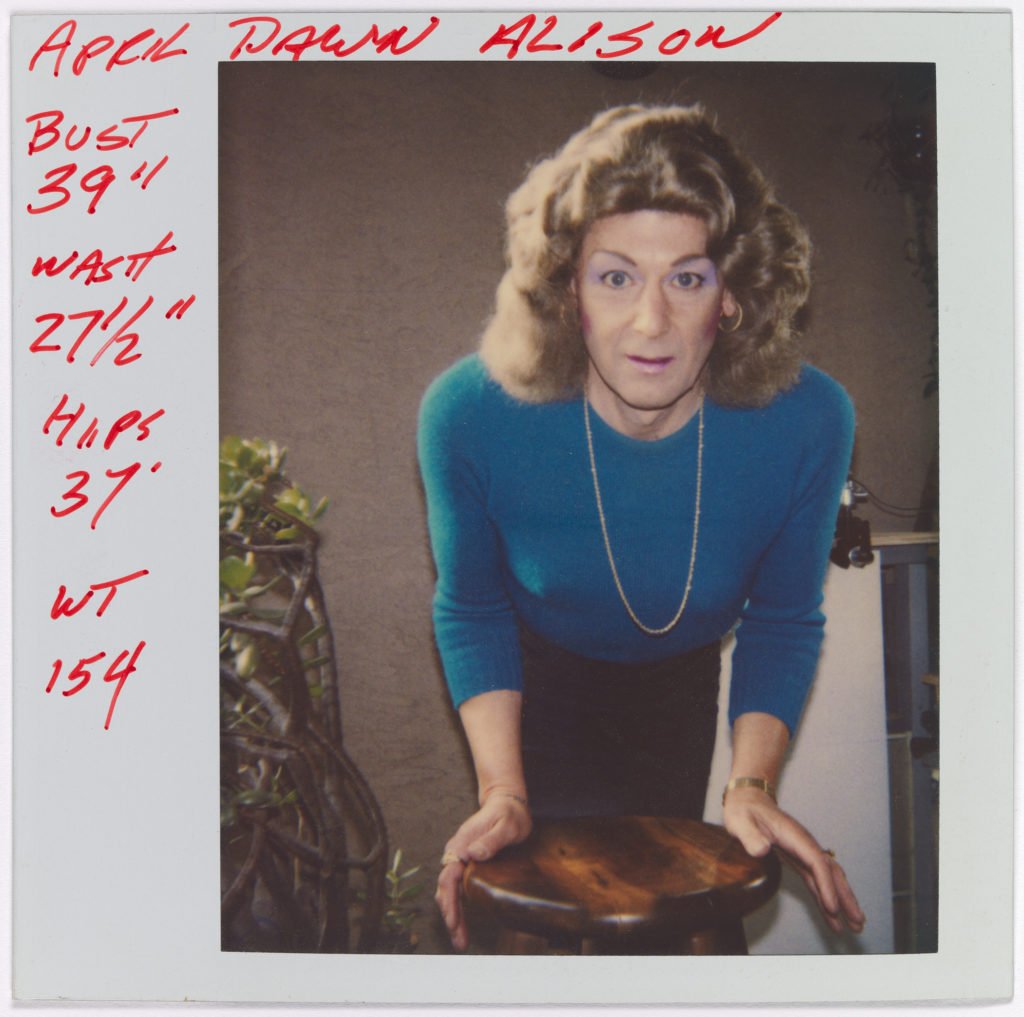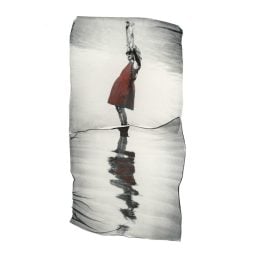To those who knew him, Al Schaefer was an average—maybe even boring—American man. Friendly but reclusive, Schaefer lived in an apartment in Oakland, California and worked as a commercial photographer. It wasn’t until 2008, when Schaefer died alone and left behind a trove of personal Polaroids, that the identity of his true inner self emerged.
Her name was April Dawn Alison.
Schaefer’s alternate persona, Alison, came to vibrant, thrilling life in more than 9,000 pictures taken over the course of decades. She inhabited a number of roles: an old Hollywood starlet, a coy housewife, a flirty femme fatale, a sexy servant gagged and shackled—and simply an ordinary woman.
Until recently, few people had seen this body of work. Those who had didn’t know if Alison would have wanted the world to see it; they didn’t know much of anything about her at all. Still, it’s hard to deny the allure. There’s a voyeuristic pleasure in the act of looking at these images, peering without consequence into the rich fantasy life of a stranger, armchair-analyzing her motivations, her repressed desire—and simply reveling in the pathos, the playfulness, the vulnerability.
But should we be looking at them at all?

April Dawn Alison, Untitled (n.d.). Courtesy of SFMOMA and MACK.
This is the question that Erin O’Toole, an associate curator of photography at the San Francisco Museum of Art (SFMOMA), had to grapple with when she first came across the pictures in 2017. The photos, after all, were inherently private. Alison is the only person to ever make an appearance; they were all shot in her private apartment. And the format of choice—Polaroid film, which doesn’t require professional processing—suggests a concerted effort to limit the audience to one.
On the other hand, there’s a temptation to liberate Alison from her lonely existence and, hopefully, provide other April Dawns with the courage to do the same.
Mulling over the question of what to do with the work, O’Toole sought the guidance of numerous LGBTQ+ artists and scholars. “For me, the key question was, ‘What happens if you show them and what happens if you don’t?’” O’Toole explains to artnet News. “The thing that most people said to me was that it came down to intention and presentation. Of course, you want to be sensitive. But at the same time, these pictures are so good that they demand to be seen.”

April Dawn Alison, Untitled (n.d.). Courtesy of SFMOMA and MACK.
Ultimately, O’Toole came down on the side of showing them. She has edited a book of Alison’s pictures, published last month by MACK. And now, for the first time ever, the photographs are set to go on public view in a self-titled exhibition at SFMOMA (July 6–December 1).
In both presentations, O’Toole was careful not to take for granted the issue of consent that looms over the body of work. Instead, she foregrounded it. Both the book and the exhibition begin with a message written by O’Toole that speaks to this tenuousness.
“I cannot know if Alan/April would have wanted these photographs to be discovered and displayed, or which name or pronoun the artist would have used in a context such as this one,” the curator writes in the show’s introductory wall text. “Language often fails to describe the complexity and fluidity of gender, and I understand that showing these pictures raises many questions surrounding identity, privacy, and intent. My hope is that they will enrich the conversation around gender at a time when people with non-normative gender identities are increasingly under attack.”
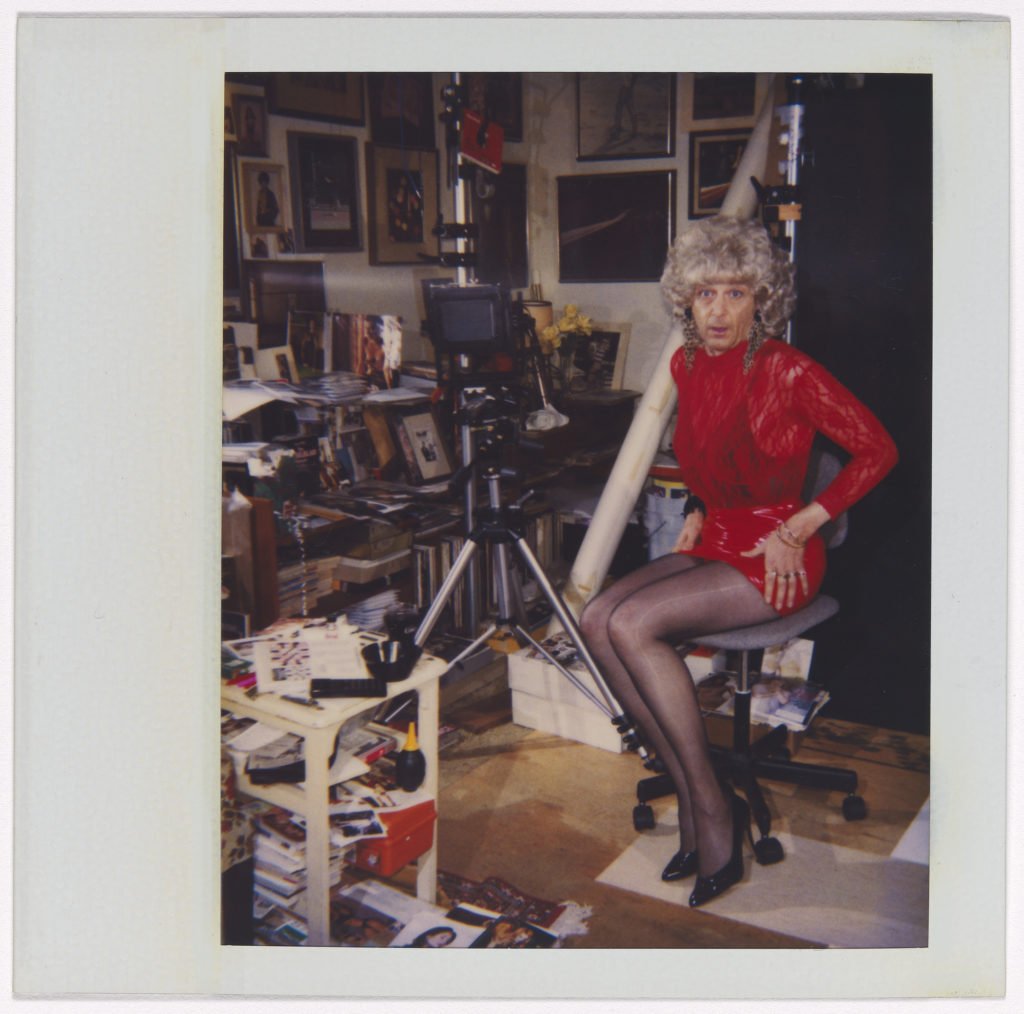
April Dawn Alison, Untitled (n.d.). Courtesy of SFMOMA and MACK.
O’Toole explains that she’s come to think of April Dawn Alison as a kind of conceptual photo project—akin to those of Cindy Sherman or Yasumasa Morimura, perhaps. And indeed, the work is rich with references.
Coming from the eye of a trained commercial photographer, the pictures are creatively composed and lit; they move in and out of different styles and tropes with ease. In many cases, Alison leaves markers of photographic production, such as studio lighting equipment or studio backdrops, in the frame, or depicts herself with a camera in hand—a postmodern touch. As a performer, it’s clear the artist is pushing herself to new creative highs, the way an actor might take on a challenging role.
“There’s this incredible sense of emotion, whether it’s joyful or melancholic,” O’Toole says. “It hits you very powerfully. It’s hard for me to articulate in words, but when I think about these pictures I feel her energy coming through. It’s practically uncontainable.”
See more of April Dawn Alison’s pictures below.

April Dawn Alison, Untitled (n.d.). Courtesy of SFMOMA and MACK.
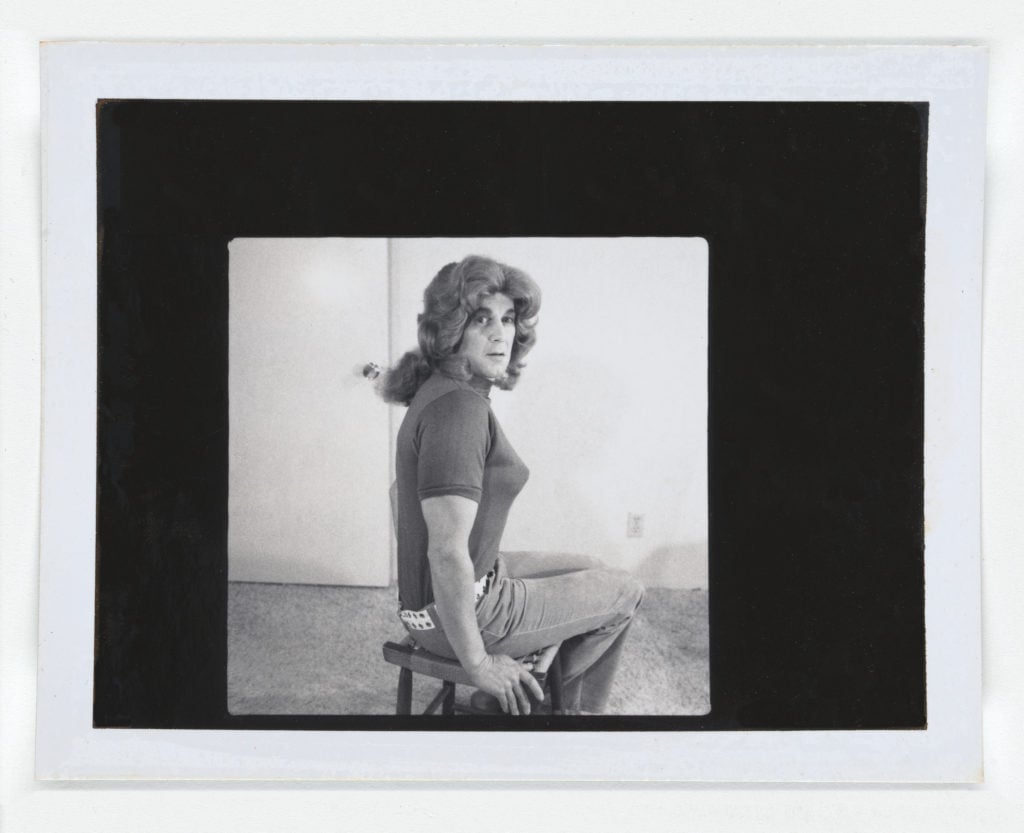
April Dawn Alison, Untitled (n.d.). Courtesy of SFMOMA and MACK.

April Dawn Alison, Untitled (n.d.). Courtesy of SFMOMA and MACK.

April Dawn Alison, Untitled (n.d.). Courtesy of SFMOMA and MACK.
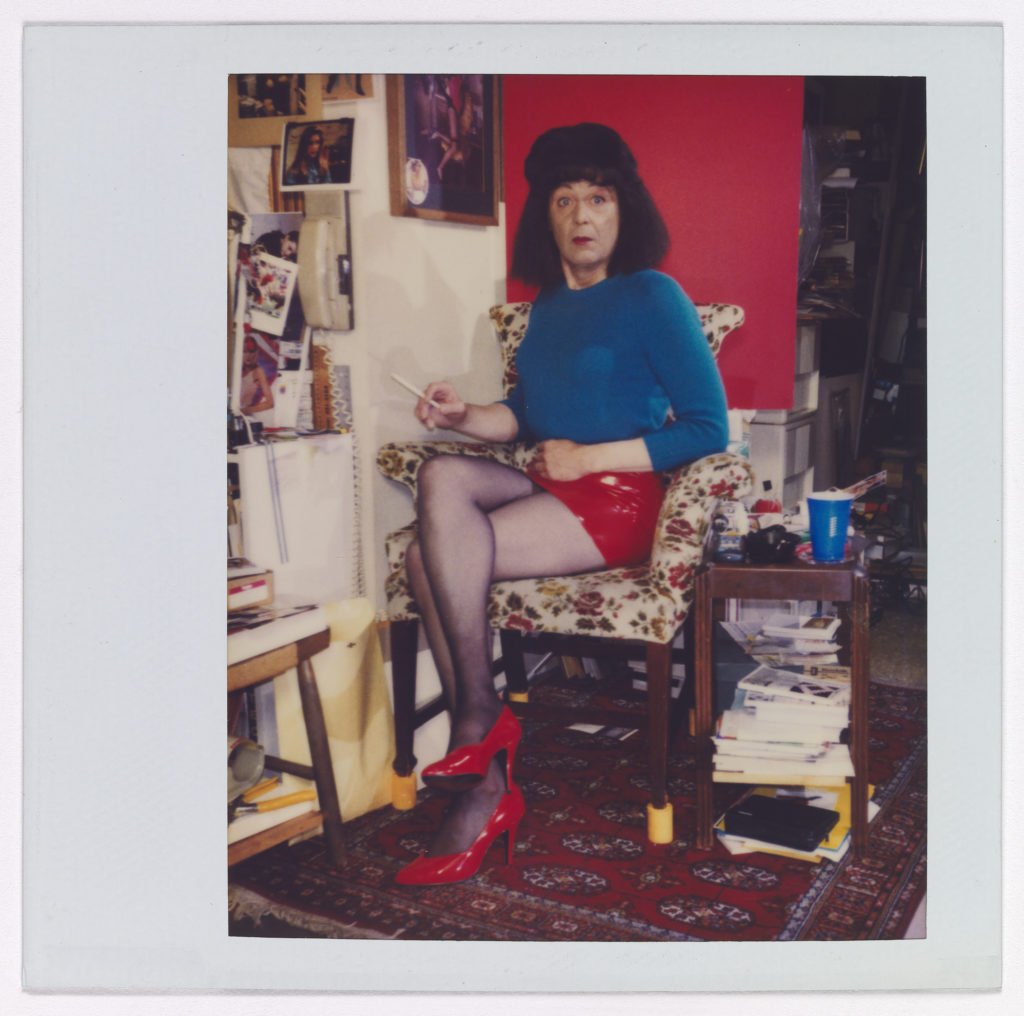
April Dawn Alison, Untitled (n.d.). Courtesy of SFMOMA and MACK.
“April Dawn Alison” is on view at the San Francisco Museum of Modern Art from July 6 to December 1, 2019.
